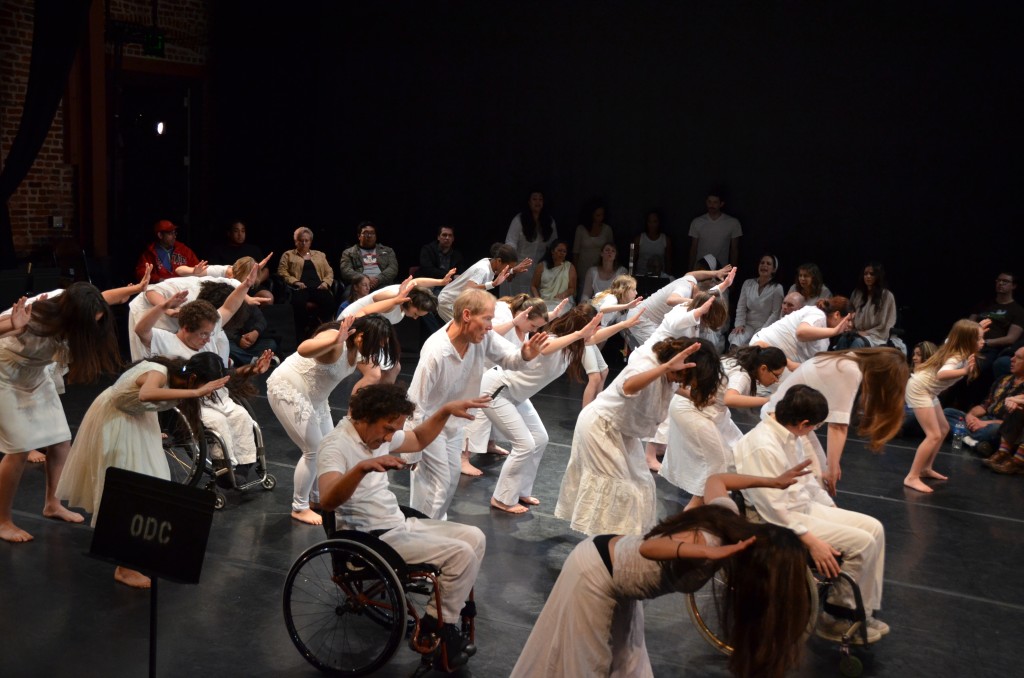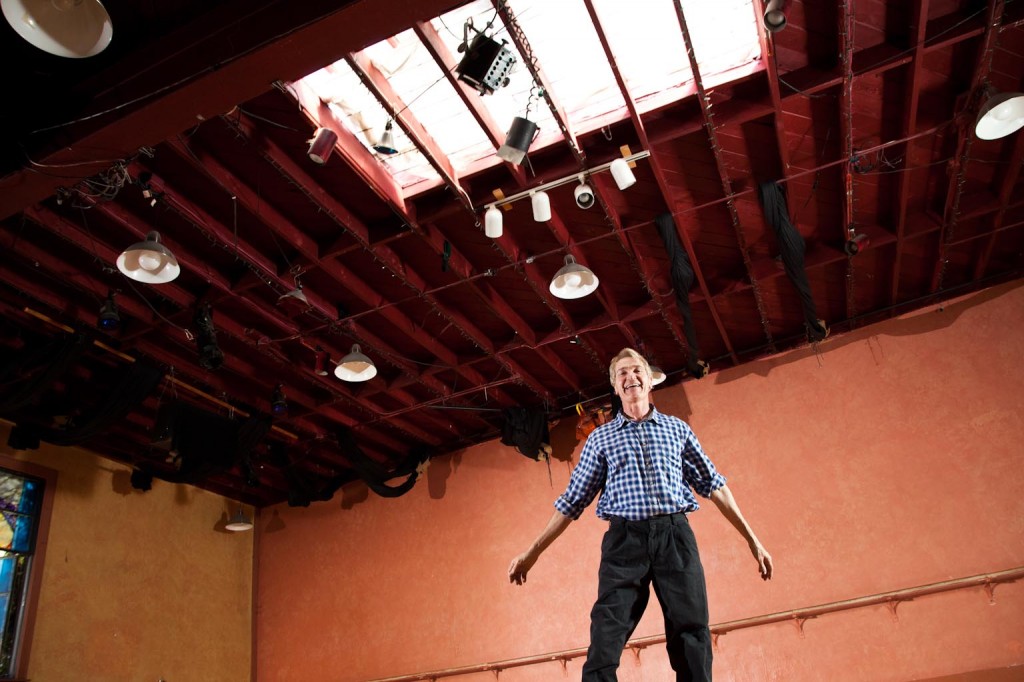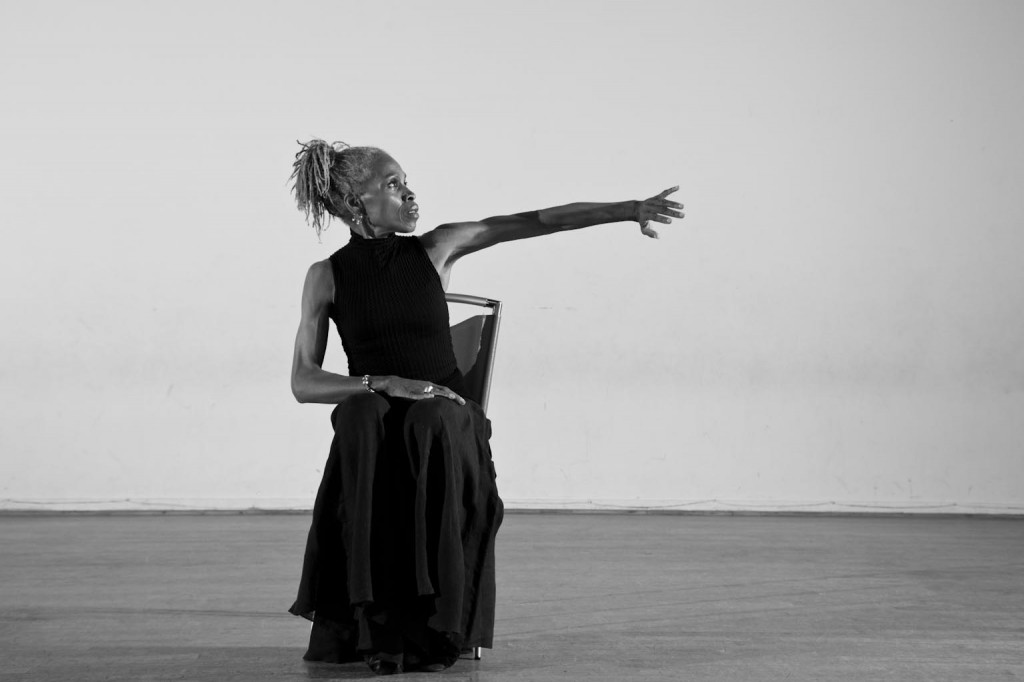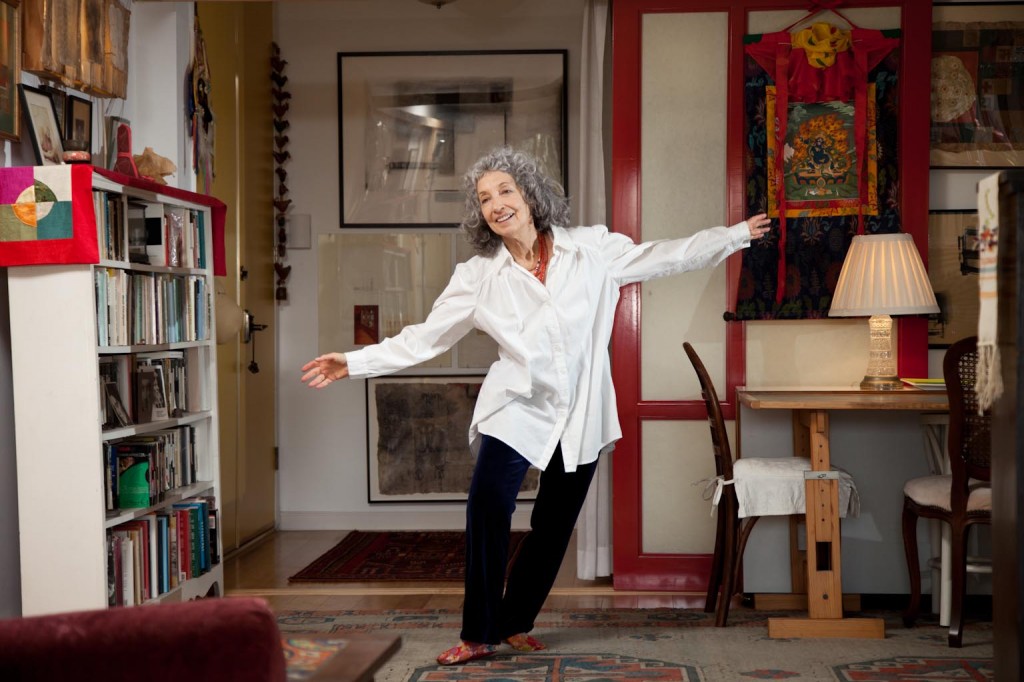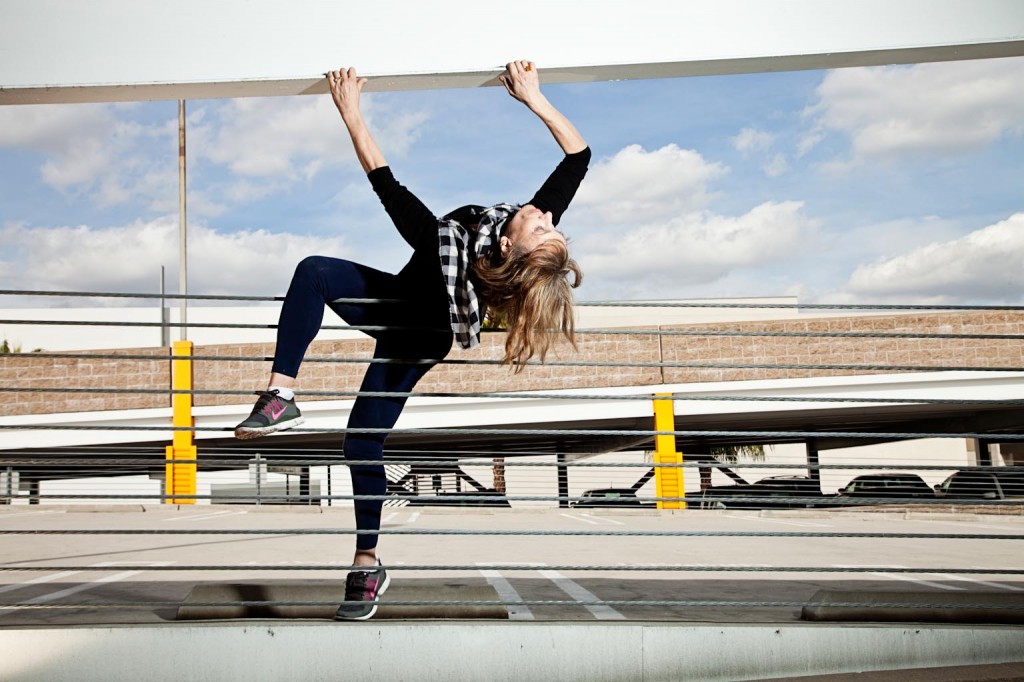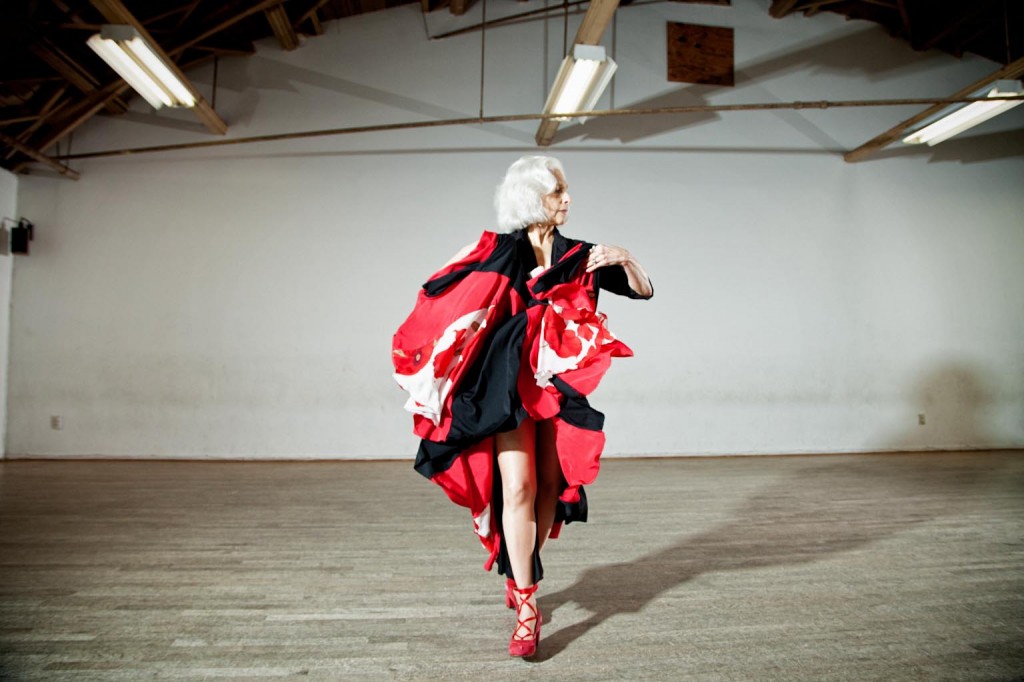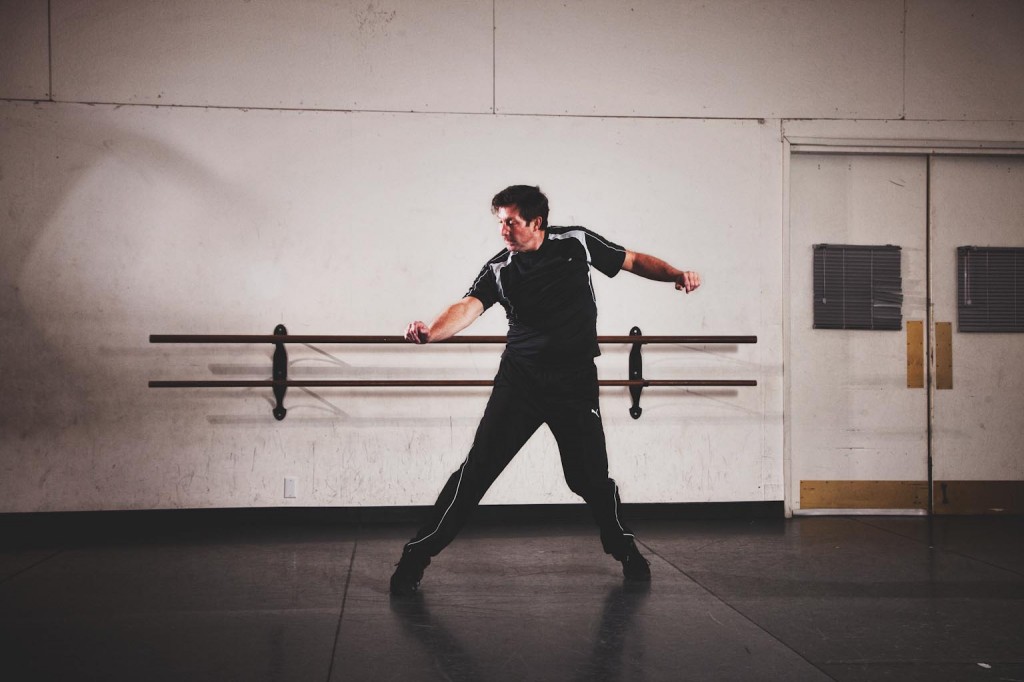Dance: A Big Practice
BY EMMALY WIEDERHOLT
Eric Kupers, a friend of mine, is the co-artistic director of Dandelion Dancetheater, a dance-music-theater extravaganza ensemble based in the Bay Area. He recently brought his ensemble to LA to perform two pieces, Tongues and Gather.
Now, Eric makes dances unlike any I’ve ever seen. I don’t always like his work, but I always respect what he’s doing. He thinks about dance in a really big way. The ensemble is comprised of 30+ people ranging in age from seven to 70. Some have physical disabilities, some have cognitive disabilities, and the performers otherwise vary in body type, ethnicity, even in level of experience they have performing. What Eric says about his ensemble is that he likes it that way.
Eric’s ensemble in performance
Now, it just so happens that one of Eric’s first dance teachers was Bill Brown, the same Bill Brown who I recently interviewed as part of the Dancers over 50 Project. Eric grew up dancing at Studio A, training under Bill. Watching Eric’s show I was once again reminded of how small the world of dance can be, but at the same time how big the practice of dance can be.
Bill Brown of Studio A
As Karen McDonald, another interviewee, said, “Art is not something that is small. Art is something that is life size…That’s my legacy, to teach art with the understanding of how it fits into one’s personal life.” Whatever one’s life holds and whatever type of body one lives in, dance can fit in it.
Karen McDonald
Eric introduced his second piece, Gather, by saying “Growth happens in cycles.” The audience and performers were assembled in the round, with performers going in and out of the circle. Cycles and circles; older dancer Deborah Cohen illustrated that with her life as a dancer, choreographer, architectural designer and Tibetan Buddhist. Her practice of dance is big, and with each new cycle or circle her life takes her in, she grows as a dancer and as an artist.
Deborah Cohen
This idea that dance is big was manifested in each interview I did. Heidi Duckler danced in a parking lot for her photo shoot. She makes site-specific dances in places not generally thought of for dance.
Heidi Duckler
After a lifetime as a flamenco dancer, Carla Luna took a huge risk and built a studio so that ethnic dance forms like hers would have a home alongside the classical dance forms. These women are similar to Eric in that they’re thinking of dance in a really big way. Dance can be about bringing together a collection of different people, or making every-day spaces become stages, or taking a risk in something you believe in.
Carla Luna of Dance Arts Academy
Laurence Blake, who followed the most traditional track from ballet dancer to teacher, acknowledged the breadth of dance: “Whether you’re a musician or a painter or dancer, we all have that same inner drive in us that makes us do what we do just for the love of it.” Or, as Deborah put it, “People who love to dance just love to dance. You can’t teach someone to love to dance.”
Laurence Blake
The ensemble of people Eric brought down to LA to perform were there because on some level they love it. These older dancers I have had the great honor of interviewing continue dancing because they love it.
And their love isn’t small; it’s life size. Dance is big. There are a million ways to be a dancer.
Photos by Gregory Bartning; first photograph courtesy Dandelion Dancetheater

